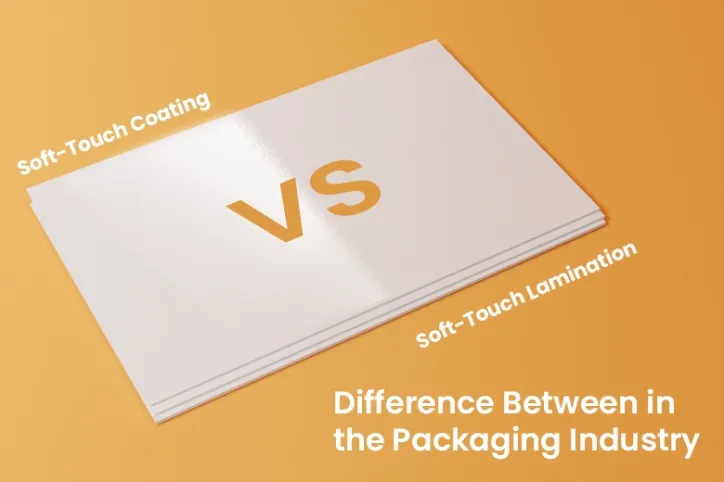When it comes to packaging material, the finish you choose always matters. In the packaging industry, soft touch finish refers to any finish that feels softer to the touch. It’s a popular method used to improve the appeal of rigid and folding carton boxes.
Primarily, there are two different finishes commonly found in the packaging industry, namely soft touch lamination and soft touch coating. In this blog post, we will explore how they differ from one another. However, let’s start by learning about soft touch lamination and coating.
What is Soft Touch Lamination?
Soft touch lamination is a type of lamination that bonds to the surface of printed paperboard using a plastic laminated film. It creates a moisture barrier that resists fingerprints and scuff marks. Soft touch lamination tends to make printed colors appear smoother and less vibrant, giving darker shades a more refined and sophisticated look.
Additionally, it provides durability and strength to custom boxes and packaging solutions, making it a popular choice among e-commerce packaging.
What is Soft Touch Coating?
Soft touch coating is a liquid finish that gets applied to the printed paper materials or packaging. After printing, this coating gets applied and then cured, leaving a subtle and sophisticated look for your packaging. It is widely used for luxurious rigid boxes, book covers, and other premium printed materials.
Difference Between Soft Touch Lamination & Coating
We understand it can be confusing when selecting soft touch coating and soft touch lamination, as they both might feel similar. Still, to make that decision easier for you, we have taken the liberty of differentiating between them below:
| Soft Touch Lamination | Soft Touch Coating |
| It’s a costly lamination as compared to other lamination and coating options. | It’s a cost-effective coating compared to soft touch lamination and expensive than others. |
| It uses a bi-oriented polypropylene film (BOPP), which is applied during an additional finishing process. | The coating is applied during the printing process and is cured with UV light. |
| It provides a moisture barrier and mutes the color tones. | It does not affect the quality of printed colors and artwork. |
| Best suited for luxurious ecommerce packaging. | Best suited for luxurious rigid box packaging and retail-ready packaging. |
The Advantages of Soft Touch Lamination
If your budget is not a limitation and you want something exceptional for your product packaging, we recommend using soft-touch lamination. Here’s why:
- Soft touch lamination offers great benefits both visually and textually to your packaging.
- It gives your packaging a velvety and premium feel.
- Adding soft touch lamination makes your packaging look more professional.
- It adds a layer of protection.
- Soft-touch lamination is fingerprint and scuff-resistant.
The Advantages of Soft Touch Coating
The soft-touch coating is a cost-effective approach compared to soft-touch lamination. It offers various benefits and some of them are as follows:
- It’s an eco-friendly option and makes it easier to recycle packaging.
- Provide a sleek and softer look and feel.
- Print that resists fingerprint and scuff marks.
- Matte coating tends to turn yellow over time, whereas soft-touch coating is yellow-resistant, making it ideal for storing goods for an extended period.
Conclusion
Choosing between soft-touch lamination and soft-touch coating largely depends on your packaging goals and budget. If you are after a luxurious and highly durable finish and do not mind spending more, lamination is the way to go. However, if you’re looking for a cost-effective and eco-friendly option that still provides a premium soft feel, coating is a smart choice. Both finishes add a touch of sophistication to your packaging; it simply comes down to which one aligns better with your brand’s needs.
Still unsure about which one to choose for your packaging project, you can contact our experts at Custom Box Makers. Also, if you are looking for budget-friendly options, consider reading our guides on aqueous coating and UV coating.

